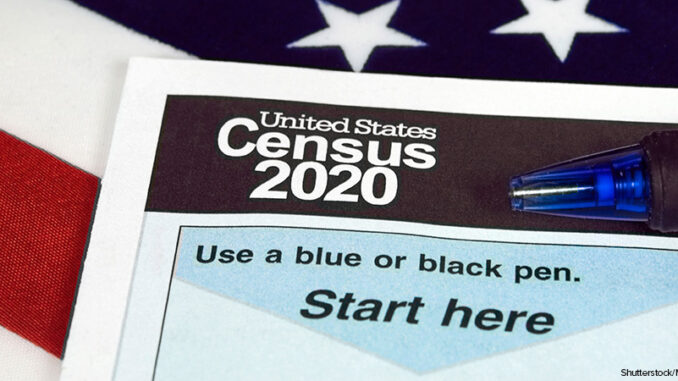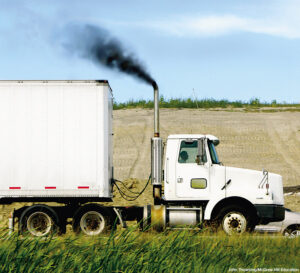
An Incomplete Count?
The U.S. Census happens once every ten years. But what is the Census, and why is it so important? The Census is a complete count of every person living in the United States (and its territories). The information is used to determine funding for public services, such as schools and fire departments. It’s also used to determine how many representatives a community has in Congress.
The COVID-19 crisis has greatly impacted the 2020 Census count. Back in the spring, the deadline for the final count was pushed back to October 31, but now it’s being moved up again: to September 30, a full month earlier than it was scheduled to end. According to recent data, about four out of every ten households still have not responded. People have had the option of responding to the census online, over the phone, or by mail. As of August 11, the U.S. Census Bureau will be sending employees out in person, to knock on doors of homes that haven’t responded yet. But the period of in-person data collection will be greatly shortened by the new deadline.
So, what happens if all of the data isn’t collected? Without an accurate count, the Census Bureau will need to use statistical models to estimate the count in certain areas. The problem is that these models may overrepresent the number of white households, while underestimating the count for people of color. Democrats and the White House have asked for extra time and funding to complete the count door-to-door. But Congressional Republicans have offered less than half of the requested amount of funding, with no extension of the deadline.
Dig Deeper Visit the U.S. Census Bureau Web site. According to this source, as of today, what is the population of the United States? Of the world?
Bill Would Remove Controversial Statues from U.S. Capitol
Did you know that every state is allowed to display two statues in the Capitol building in Washington, D.C.? Recently, the House of Representatives passed a bill that would remove those statues that honor members of the Confederacy. The vote passed 305 to 113, with all Democrats voting in favor and the Republican vote divided (72 for, 113 opposed, and 1 voting present).
If the Senate takes up the bill and it becomes law, the three specific statues that will be removed are of Charles Brantley Aycock, the fiftieth governor of North Carolina and a vocal white supremacist; South Carolinian John C. Calhoun, the seventh U.S. vice president and a strong supporter of slavery; and James Paul Clarke, the eighteenth governor of Arkansas and a congressperson who often spoke about preserving white supremacy. A bust of Chief Justice Roger Brooke Taney, who was the author of the 1857 Dred Scott decision, will also be removed and replaced with a bust of Thurgood Marshall, the first African American justice of the U.S. Supreme Court.
But there is no guarantee that the bill will pass in the Senate. There is still a fair amount of debate about what to do with the statues once they are removed. Also, some members of Congress have said that while they support the statues’ removal, they believe it is up to the individual states to decide which two statues they would like to display in the U.S. Capitol.
Dig Deeper Why was the Dred Scott decision important? If you aren’t sure, use Internet resources to help you remember.
The Clean Air Act Turns 50

Fifty years ago, Congress passed and Richard Nixon signed a landmark piece of legislation: the Clean Air Act of 1970. This law established federal and state regulations for emissions of harmful pollutants. It also recognized the impact of air quality on public health and the well-being of citizens. But half a century later, air pollution continues to be the single biggest environmental health risk in the United States. The U.S. remains a world leader in premature pollution-related deaths. Even more troubling: a recent study has revealed that your economic status and the color of your skin play a role in determining whether or not you have access to clean air.
The study, published in Science magazine in July of this year, looked at air pollution levels from 1981 to 2016 and showed that while overall air quality has improved in that time, areas that faced higher levels of pollution in 1981 remain more polluted today. It also showed that economically disadvantaged people and people of color are more likely to live in these highly-polluted areas, such as near factories and highways. This is problematic because breathing unclean air can lead to, or worsen, many medical conditions such as asthma, diabetes, and some types of cancer.
So where are the most highly polluted places in the United States? Then and now, the worst offenders are Southern California, southeast Texas, and certain areas of the eastern U.S.
Dig Deeper What cities in the United States have the cleanest air? Use Internet resources, such as the Web site for the American Lung Association, to learn more. Then use the Internet to find out the racial/demographic data and average income for that area. In your opinion, does what you have found prove the study’s findings or not? Explain.
Sports and the Coronavirus
The impact of the COVID-19 crisis has been felt in every arena of life, from schools to businesses … and that includes sports arenas. Professional sports teams have had to delay, cancel, or drastically alter their schedules and seasons in order to keep athletes (and fans) as safe as possible. The NBA restarted its season last week. Players are being kept in isolation at Walt Disney World in Orlando, Florida. They have been training there since mid-July. It’s hoped that this “bubble” approach will prevent players from coming into contact with the virus and possibly infecting each other. The league is taking other precautions as well: only 22 out of the NBA’s 30 teams will participate; the games will all take place in the same three venues; and no spectators are allowed. So far, it seems like this method might be working: as of right now, zero players have tested positive for the disease.
Major League Baseball, on the other hand, is taking a different approach, with less success. The league attempted to begin its shortened season last week but quickly hit a hurdle when seventeen players and two coaches from the Miami Marlins tested positive for the coronavirus. Now, teams that have already come into contact with the Marlins, such as the Philadelphia Phillies, are testing their players and coaches as well. So far, the Phillies have had two coaches test positive, and as a result, they are canceling their gameplay until further notice. Unlike the NBA, professional baseball has not made an effort to limit travel or to quarantine its players.
